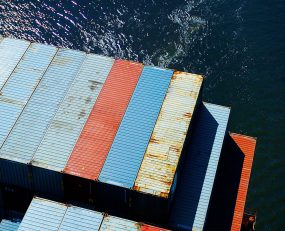
The North American freight transport infrastructure continues to stagger under the weight of containers.
The impression in the second quarter of the year was one of an improving situation, with the near-crisis conditions seen towards the end of 2020 and the beginning of 2021 gradually being resolved. However, through June and into July the many of the problems with congestion have returned, with inland terminals beginning to buckle under the pressure.
The rail system in particular has suffered from the leading class 1 providers attempting to rationalise the flow of containers. Union Pacific temporarily halted the acceptance of new consignments from the West Coast ports in order to balance the movement of empty and full containers in its yards in Chicago, although by the end of July services had resumed. The operational problems generally revolve around shortages of empty containers, skeletons, back-loads for both rail and road services but also space for demurrage.
The underlying causes may be influenced by fluctuations in the flow of traffic from origins in Asia, for example, the effects of the COVID-19 driven closure of ports on the Pearl River Delta earlier in July, a problem that may continue with the disruptions happening presently in Vietnam. However, the gross volume of traffic passing into the US continues to be very high. The Port of Los Angeles continues to see record-breaking demand, with June seeing a 27% increase in the number of containers handled, at 876,430 TEUs. Of these imports constituted 467,763 TEUs, empty containers 312,600 and exports 96,067. Empty container handled represents a 47% jump year-on-year but exports represent a fall of 12%.
Discussing the numbers Gene Seroka, Port of Los Angeles Executive Director, said, “fashion, back-to-school items and Halloween goods” were driving demand, with some retailers “shipping year-end holiday products early”. This latter point is important, highlighting the lower levels of inventory found in the US economy at present. This is likely to amplify the effects of robust consumer demand.
This implies that congestion in container traffic and other areas of freight transport is likely to continue indefinitely.
Source: Transport Intelligence, July 27, 2021
Author: Thomas Cullen